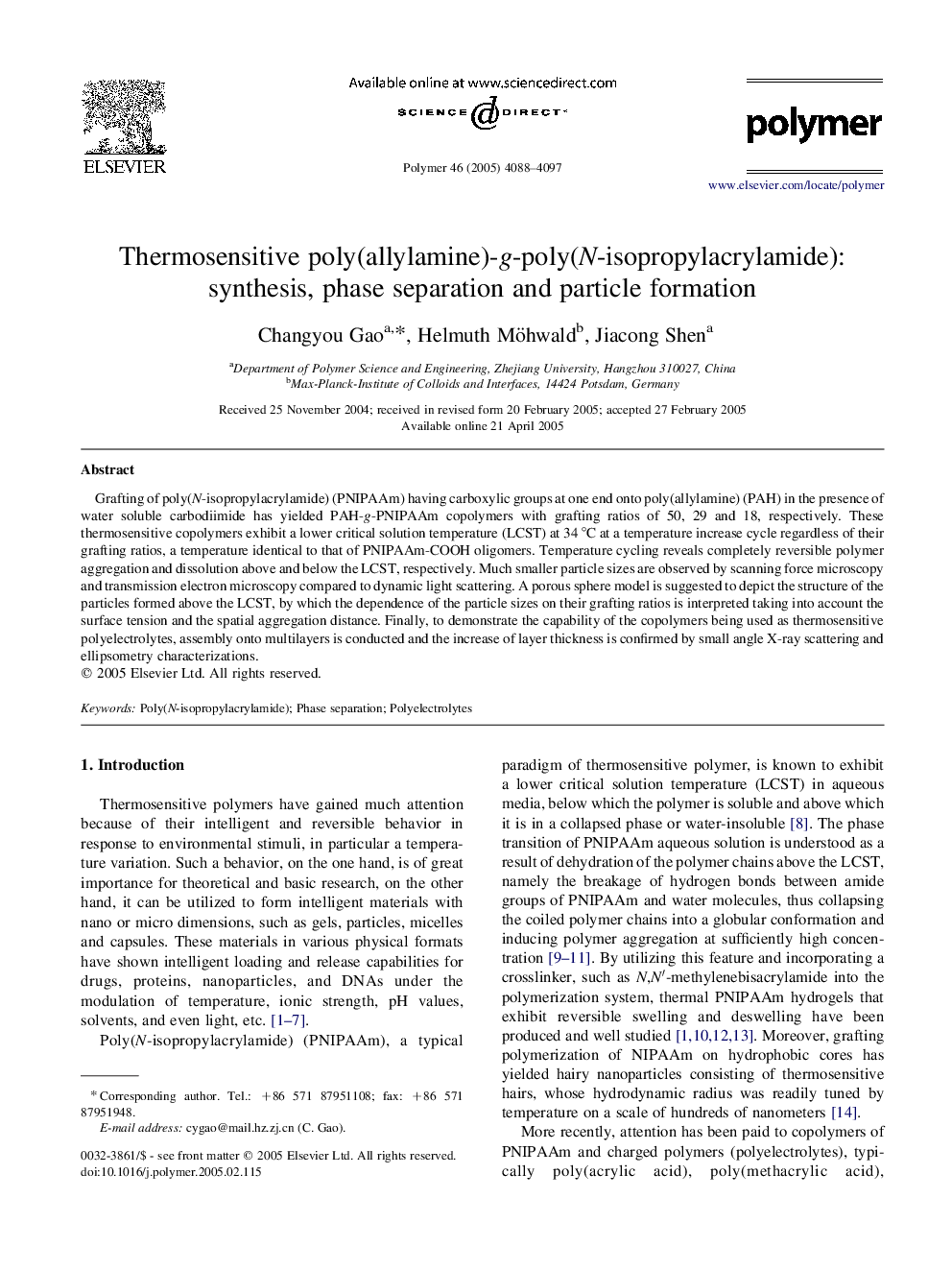| Article ID | Journal | Published Year | Pages | File Type |
|---|---|---|---|---|
| 5191860 | Polymer | 2005 | 10 Pages |
Abstract
Grafting of poly(N-isopropylacrylamide) (PNIPAAm) having carboxylic groups at one end onto poly(allylamine) (PAH) in the presence of water soluble carbodiimide has yielded PAH-g-PNIPAAm copolymers with grafting ratios of 50, 29 and 18, respectively. These thermosensitive copolymers exhibit a lower critical solution temperature (LCST) at 34 °C at a temperature increase cycle regardless of their grafting ratios, a temperature identical to that of PNIPAAm-COOH oligomers. Temperature cycling reveals completely reversible polymer aggregation and dissolution above and below the LCST, respectively. Much smaller particle sizes are observed by scanning force microscopy and transmission electron microscopy compared to dynamic light scattering. A porous sphere model is suggested to depict the structure of the particles formed above the LCST, by which the dependence of the particle sizes on their grafting ratios is interpreted taking into account the surface tension and the spatial aggregation distance. Finally, to demonstrate the capability of the copolymers being used as thermosensitive polyelectrolytes, assembly onto multilayers is conducted and the increase of layer thickness is confirmed by small angle X-ray scattering and ellipsometry characterizations.
Related Topics
Physical Sciences and Engineering
Chemistry
Organic Chemistry
Authors
Changyou Gao, Helmuth Möhwald, Jiacong Shen,
